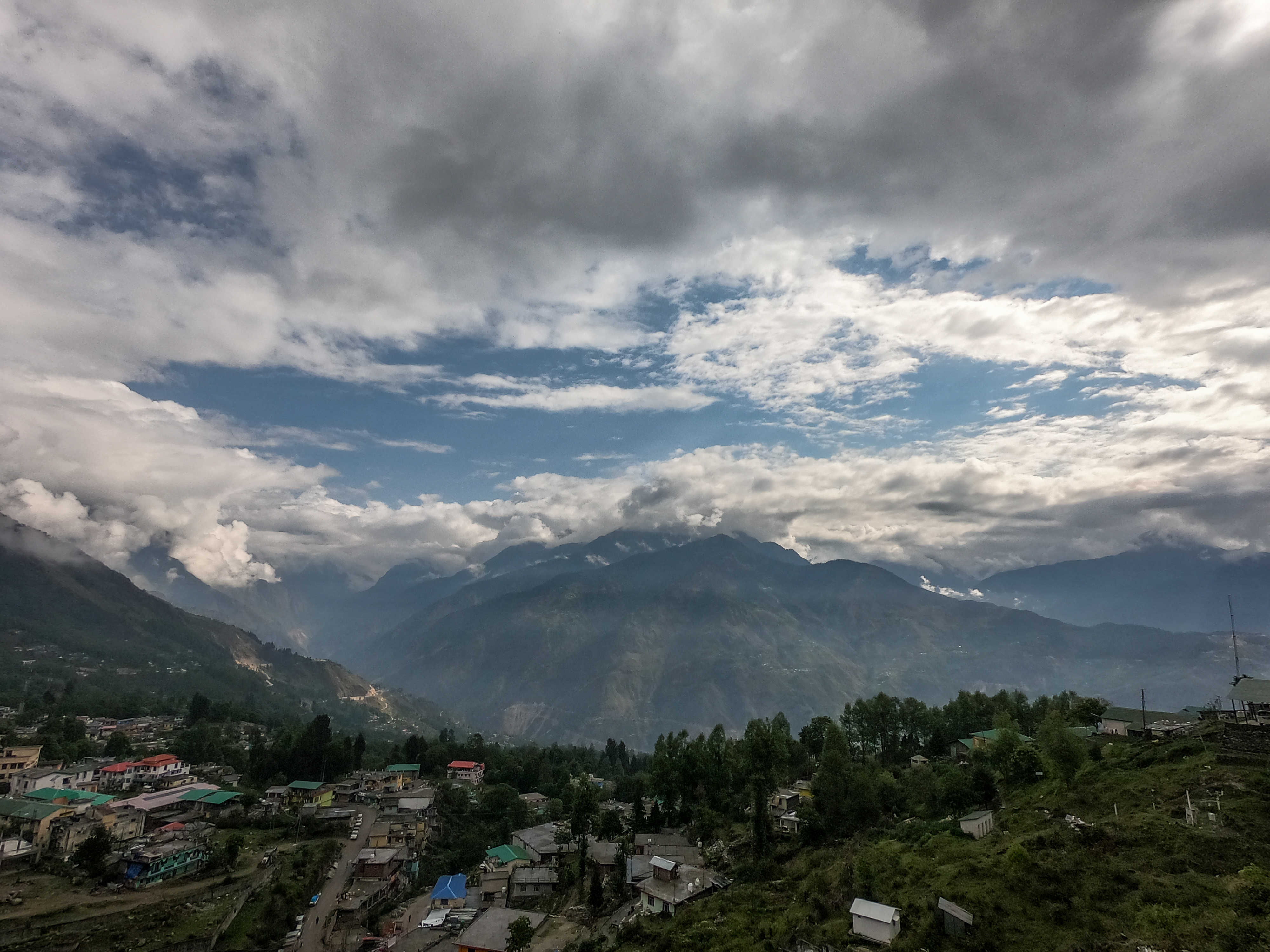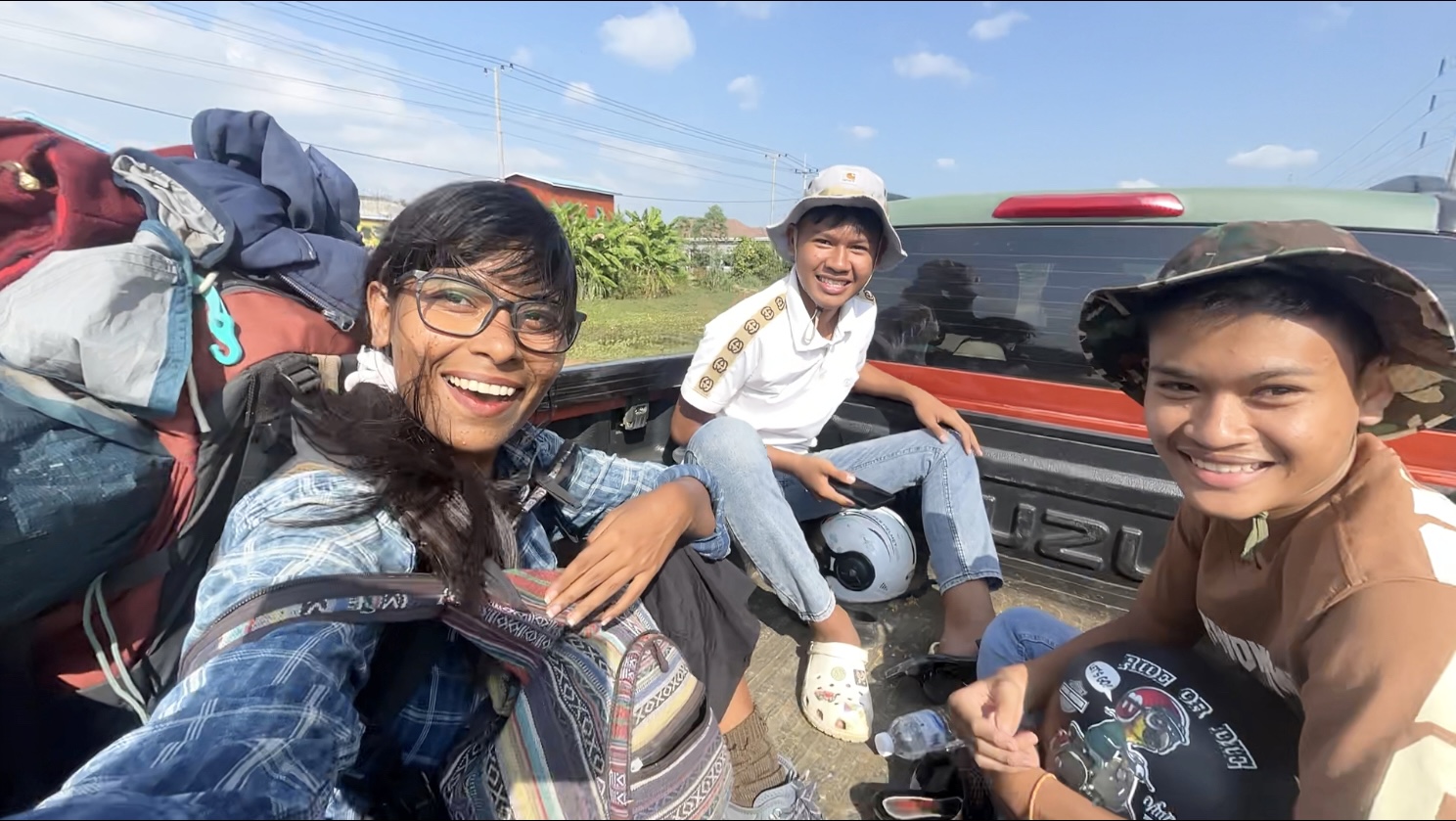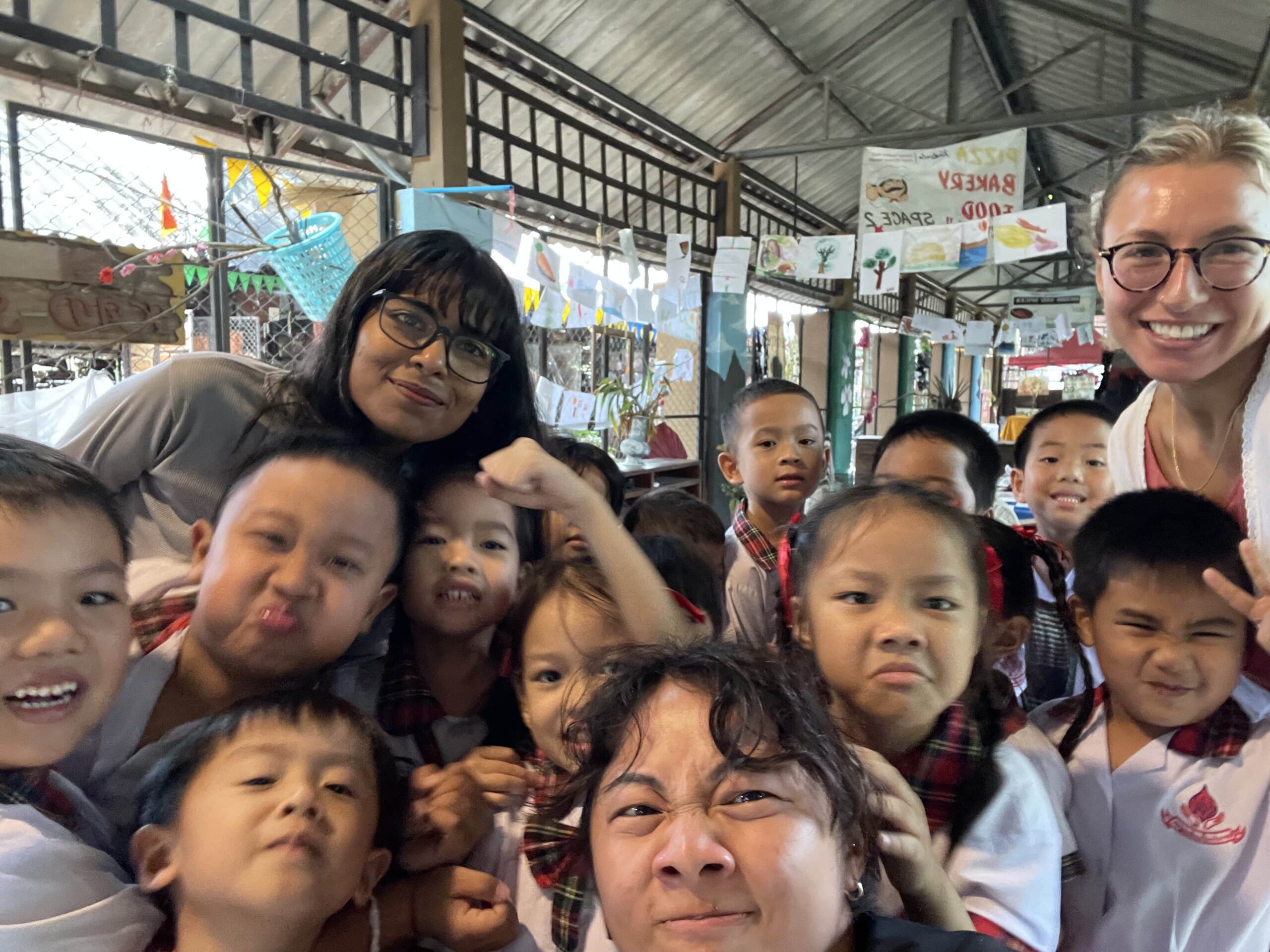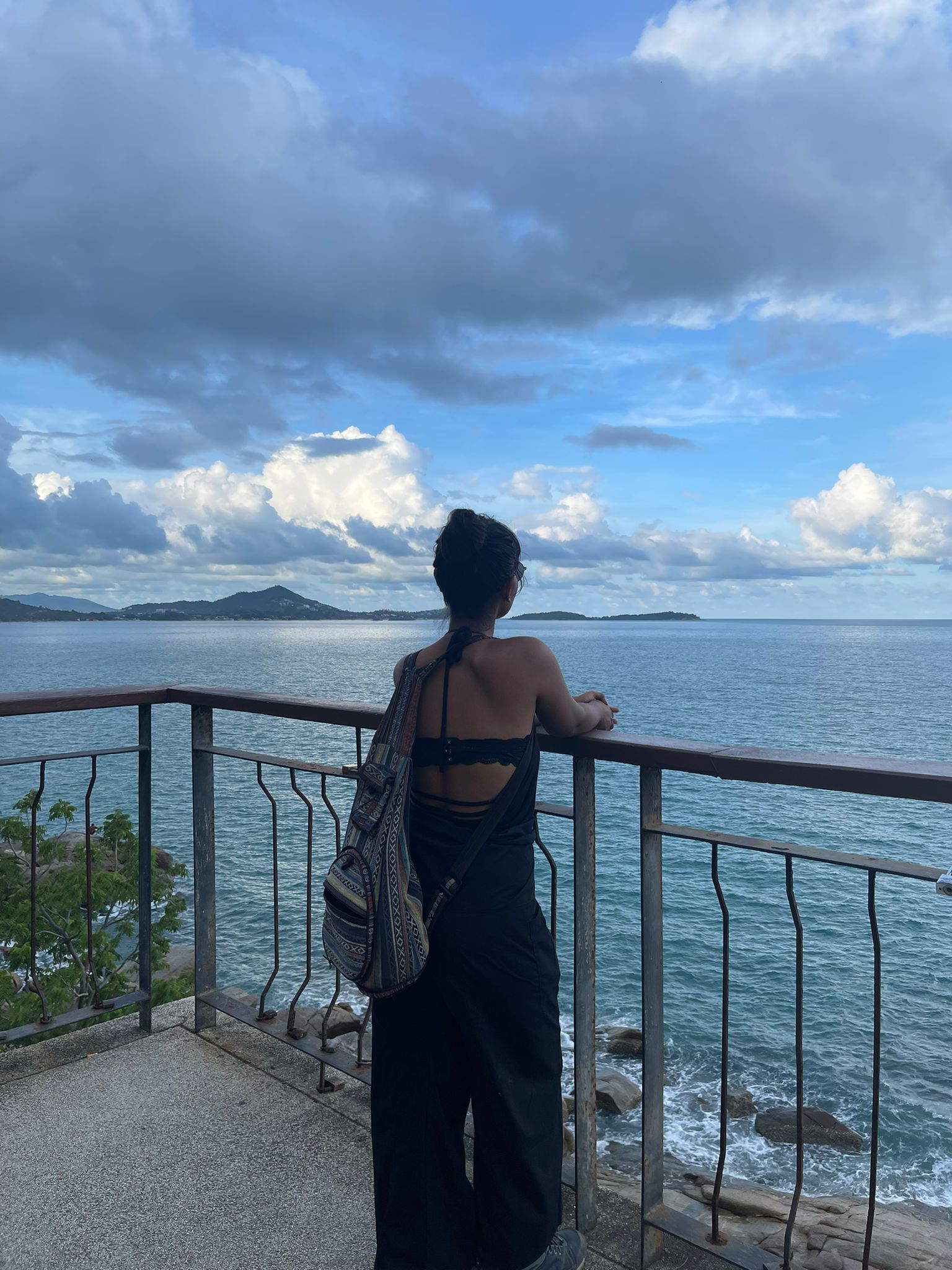With the COVID surge in India leading to the second wave, I was exposed to the possibility of getting infected while living in an ashram in Kausani Uttarakhand.
My time spent in Kasar has so many layers that it would require open-ended hours to explore that particular ground. Both positive and negative experiences simultaneously spoke to me, synchronising well with the belief of the locals. Even while leaving Kasar (or rather, Maat Village), I lost my way on the trail I had taken multiple times before. I like to believe Kasar didn’t leave a single chance to test me. The days went by like a thunderstorm leaving behind its cold wind. Before I knew it, I was already a one-month-old there, all set to leave the nest. From a friend in Kasar, I got to know about a volunteering opportunity at an ashram in Kausani. I was off to a new nest.

The spread from Kasar to Kausani is one of my favourite hitchhiking stretches so far. After waiting for half an hour in Kasar, a bike gave me a lift to Almora. From Almora to Kosi, from Kosi to Someshwar – the next two bike lifts landed me on Someshwar, the most unanticipated surprise on the road. The green lands all around with the tiny houses tucked in between – I couldn’t help but wonder what lay ahead of me. At that very instant I decided to hike for the remaining 15 km. A village woman in Someshwar struck up a conversation with me about how monkeys destroy the potatoes on her farm. On the road, four-five women going on the same way offered to take me to Kausani in the shared jeep. But I brushed the offer aside in jest. I had to hit the road.

With only a packet of biscuits and an energy drink, my 70-litre-backpack and I made our way through the villages, under the curious eyes of the locals in awe. Some would ask me about my whereabouts, some would show me the way, and some would want to drop me off. Two kilometers prior to Kausani, a bike rider proposed a lift, noticing the showstopper of my huge backpack. He dropped me off in Kausani and my first glance of Kausani, dramatic enough, unearthed the snow-peaked Himalayas. ‘Look, Himalayas!’ I cut off the local man who was giving me a mental route map to the ashram.
The ashram was another 4-km hike away. The roads are so breathtaking in this region that you would be obligated to walk the line. The influx of beauty on both sides will never let you be alone. In particular, the 4-km-hike from Kausani market to the ashram bends into a forestry trail. In the near future, I would get lost there, carrying a crate of vegetables. But on the first day, I could find my way to the ashram.
To the ashram folks, the pandemic is a hoax. It’s an international conspiracy to obliterate the world population. They asked me to classify 100+ articles that try to prove the said. Not delving into much detail, it’s safe to say that I wasn’t moving swiftly with the ashram ideology, so I left.
Also read – Panchachuli Base Camp Trek – Camping in the Rain
Kausani: A Picturesque Hill Station in India

Your every blink will create a frame. Kausani is still like that. It’s like it’s posing for photographs all the time. The cloud formations, like a cluster of soft cotton balls, would dense up one sunny day and fall apart in rain the next day.
Lurking between a clean sky and a cloud-laden evening, I would spend my days volunteering at the ashram and living a secluded life of my own (due to COVID). Initially, the volunteering work included painting the walls and cleaning the storeroom. Later on, the work turned into something that was clashing with my beliefs.

To the ashram folks, the pandemic is a hoax. It’s an international conspiracy to obliterate the world population. They asked me to classify 100+ articles that try to prove the said. Not delving into much detail, it’s safe to say that I wasn’t moving swiftly with the ashram ideology, so I left. But I had a gala time painting the walls, and taking out the weeds. Three satvik meals a day and a room bigger than I have ever lived in – set in a comfortable stay. Most importantly, I was surrounded by forest trails and the Himalayan peaks. Looking at Trishul peaks from my room was a daily affair.
Also read – Jim Corbett National Park – Leopard Spotting at 2 am
Trek to Rudradhari Waterfall (A Relief in Between Covid)
Ashram life is community-based. Breakfast, lunch, dinner, yoga, and meditation – it’s the collective efforts of all the people and activities that contribute to the philosophy of the ashram. Trekking as well was done in a group, of which I was a little skeptical. I tend to trek/hike alone. Only during the Tungnath-Chandrashila trek, did I have numerous people alongside me (Since it’s a common trek, it’s crowded, but I embarked on it solo). I prefer treks that give me the space to get lost.

The Rudradhari Waterfall trek was the first group trek I had done, with Tim, a 58-year-old Australian guy, and three other Indians in their 20s. Despite being a non-native (I don’t like the word ‘foreigner’), Tim had a profound knowledge of the trails around. He had been living at the ashram for over a year and explored the jungle on his own. His surreal stories also brought so much colour to the trek. I think I understood the perks of trekking in a group. Tim has the pace of thunder and lightning which induced me to keep up with the positive energy he was radiating and pushed me to match the same rhythm. Well, more or less.
While trekking, the most important part to focus on is to be absolutely comfortable in your own walking pace, whatever the others’ pace be. But sometimes, you may get surprised at what you can do, when someone pushes your own potential a bit further. I had never trekked this fast! To my surprise, I was not even tired after 17 km of the uphill-downhill quest.

12 km away from the main Kausani market is Rudradhari Waterfall. From the ashram, it’s almost 8.5 km. The trail will take you through reddish-brown meadows and stone-centered waterbodies with receded forests in between. What begins mostly as a sliding downward stretch, morphs into a straight uphill. As per Tim, there’s a military base down the line, also a pump house by the same name. Stand by the trail and the lavishly-green villages on your left will brag about their rich lands. After that, you pretty much hit the main road leading to the base of the trek.
There are two-three dhabas near the base, to make you indulge in your gastronomical pleasures. From the base, it’s a one-km-hike upwards. A few stairs and the waterfall.
Mythology has it that Shiva took the form of Rudra at this spot. The waterfall is an enchanting stream of water, falling on a huge puddle. This natural water-body gets dried up during summer. But it was thriving when we visited in April.
Rudradhari Waterfall is also the base for Peenath Trek.
Also read – How to Spend the Best Time in Munsyari
Trek to Baijnath Temple through Garur

Downhill-across-across-uphill. That’s how Tim briefed us about the trek. This time there were three of us, the rest were fed up with Tim’s thunderstruck speed. Well, the fewer people there are the better.
It’s a twelve-kilometer trek (including the way back) alongside a narrow drain, cuddled in the greenery of the valleys. There’s another way, but we chose the drain-trail, it’s a lot more enthralling. The other non-drain trail was taken on our way back. The trail ends in Garur, a town of frame-worthy houses.
I was absolutely fascinated by the houses in Garur, so diverse in patterns and colours. From dilapidated to pucca houses, it seems they all are posing for a rental pageant. Believe me, I am not exasperating. Maybe because of the lockdown, I could experience a commercial town in such a smooth and pacific way. Otherwise, I have heard that Garur doesn’t do much for the tourists.

From Garur, the main road will take you straight to Baijnath. Built by the Kumaon Katyuki king around 1200 years back, Baijnath Temple is a quaint ancient remnant. The bits and pieces of this archaeological remembrance are scattered all over Baijnath. The temple lies on the bank of the river Gomati. As far as the mythology goes, Shiva and Parvati got married at the confluence of Gomati River and Garur Ganga.
The temple was closed, due to Covid lockdown. That works well for me. The silence of the lake came with the depth of the clouds.
Also read – Kumaoni Holi – The Festival of Colours in the Mountains
Travelling across India during the Covid Pandemic

With the surgical and hot-headed strike of the second wave in India, travelling had reached its undestined extreme. Hard-core backpackers, in particular, were in a monotonous dilemma about their unintended whereabouts, questioning the freedom of travelling and the uncertainty of a future. Even though I embraced a nomadic life with a world pandemic outside, my travelling had been slow and responsible, expending myself in a place for weeks or a month.
Travelling like a local and dissipating in the local culture requires time and space. Not all places though. Places like Dehradun or Nainital couldn’t hold on to their grounds, rather couldn’t let me hold on to mine. My backpack and boots were on the run, rummaging through the intimacy of another place I could be intimate with. But such places are few and countable. Mostly, I like to sense the sense of belonging to a place as long as the coconut runs out of water, for me. Part of the reason why the fumes of the pandemic did not ransack my adventures during all the months backpacking across Uttarakhand is the slow pace of my travelling.
Even before the second wave hit the sack hard, I had a shelter designated for myself. To me, an ashram nestled in the dense serenity of a forest was the safest subterfuge when the world was going through terrible shifts. Living in the jungle with long stretches of no civilization would give me the luxury of trekking at a time when the death statistics were ramping up all over India. It felt to be the warm shelter I needed to survive the overpowering second wave. And it was, for some time.
Also read – Khaliya Top Trek – The Best One-Day Trek in Munsyari
Volunteering at An Ashram in Covid

The initial days of volunteering (mostly painting the walls and cleaning the storeroom) were so engaging to my soul that no ‘otherwise’ thought infiltrated my mind. A four-bedded room with my personal desk, couch, wardrobe, electric kettle, attached bathroom, and most importantly, Trishul and Nanda Devi peaks in blissful states were omnipresent from the comfort of my balcony. Three saatvik meals were provided at fixed hours, with at least three kinds of fruits for breakfast (mostly papaya, grapes, watermelon, or banana). While learning about Transcendental Meditation and trekking with a few volunteers to Rudradhari Waterfall and Baijnath Temple, I couldn’t imagine being anywhere else.
My first interaction with the ashram folks opened with a caveat, ‘Get that thing out of my sight!’ The ‘thing’ was the mask I was wearing. The ashram was of the firm conviction that the pandemic was a conspiracy, an international collaborative hoax to annihilate the world population, if not completely destroyed. It is to tone down the light of the human population to a quantifiable extent. To prevent others from adhering to the prevention measures undertaken widely throughout the world, they banned wearing masks on the ashram premises. The reality of the world, at that time, had taken a Utopian turn.
The ashram was a utopia in the utopia of the world. Unable to comprehend the gravity, or rather understanding, of a world pandemic, they would continue with the community-based living on which their cornerstone was formulated, they would not sanitize even though fruits and vegetables came directly from Kausani market and bear this, they would demean the intellect of the people who believed in the pandemic. They would crack up jokes over the idiocy of the believers, who, as per the ashram folks, had been brainwashed by the mass media. The lethal dose of the vaccine was the supreme motto of the conspirators, while the disease is a non-transparent rumor to push people to a point of desperation. The point at which they would be obligated to take the vaccine. This is where the responsibility of the deadly vaccine wides open, the sly opportunist devising the murder of the humans.
Also read – Is Almora Worth Visiting? Let’s Find Out
Why I Had To Leave Kausani

Where does an unbaked theory lead to? People started getting sick. With each passing day, one by one, in the queue of consequences, they started getting feverish. Then body pain, cough, weakness. Some lost the sensation of taste, some were bed-ridden. My room was clubbed up between two rooms with two COVID-affected patients. The sound of their coughing would reiterate all night long. Yet ‘there’s no such thing as COVID’ would amp up over their coughing frenzy. One of them would reassure the crowd with ‘It’s just seasonal change’. He got bedridden soon after that.
Ironically enough, on my last week of volunteering, the head of the ashram trusted me with the job of classifying articles that prove the nonexistence of COVID. Me! The only person who was sanitizing herself ten times a day. Hundreds of articles were piling up in the ashram’s email box configuring the bogus dissemination of a disease. They needed to be sorted out for a clear propaganda of the non-COVID theory.

Yes, I left that week, with a stern intent to reach Munsyari at any cost. Munsyari is 162 km away from Kausani. Complete lockdown was knocking at the doors of Uttarakhand quite vehemently. I was very much under the possibility of getting stuck anywhere, yet I had to get away from the ashram.
In one early morning, I hiked from Kausani to Garur for 12 km, and opted for a shared jeep to reach Bageshwar. The shared jeep costs Rs. 60 (from Garur to Bageshwar), yet due to restrictions on the maximum number of people in a public vehicle, the driver asked for Rs. 150, more than twice. The Bageshwar Police stopped the jeep midway and inquired if the driver was grilling us with a higher fare. The police officer gave me his number and told me not to pay more than Rs. 100. This was the first time I received any positive assistance from the police.
The ashram was a utopia in the utopia of the world. Unable to comprehend the gravity, or rather understanding, of a world pandemic, they would continue with the community-based living on which their cornerstone was formulated, they would not sanitize even though fruits and vegetables came directly from Kausani market and bear this, they would demean the intellect of the people who believed in the pandemic.
Also read – Kasar Devi in Almora – The Worst Volunteering Experience
How I Reached Munsyari from Kausani

That night was spent in Bageshwar at KMVN Rest House. The dorm bed costs Rs. 200 per night. I was all alone in the dormitory. All the KMVN Rest Houses ought to be turned into vaccination centres or COVID wards soon. The caretaker cautioned me against planning for a long stay. 31 people died in Bageshwar that night, as per the locals. I saw a dead body taken through the street the next morning.
As the local bus from Bageshwar to Munsyari (distance: 128 km) was not running that week due to the curfew, I had to pay an exorbitant amount to a commercial taxi (Rs. 4000, others asked for Rs. 7000) to get to Munsyari.
The drizzle that started accompanying us towards the end of Bageshwar district maneuvered into heavy rainfall from the beginning of Pithoragarh district. The road condition in the Pithoragarh district is so precarious with unfurnished gravel and water-logged puddles that it can get risky at times for an amateur driver. The taxi driver was growling over how the government did not pay the slightest attention to the road in the last five years. The driver decided against going forward in such rainfall. Cooped up within the confinement of water-strained windows, he shared his homemade breakfast with me. Paratha and Pickle, his wife’s cooking.
How many people died from COVID? innumerable. Is it real? Is death real? Is pseudo-religious belief real?
Support my solo adventures around the globe by joining the Patreon community.
Live the Adventure
Get weekly articles delivered to your doorstep and stay up-to-date with my new travel stories.





Leave a Reply